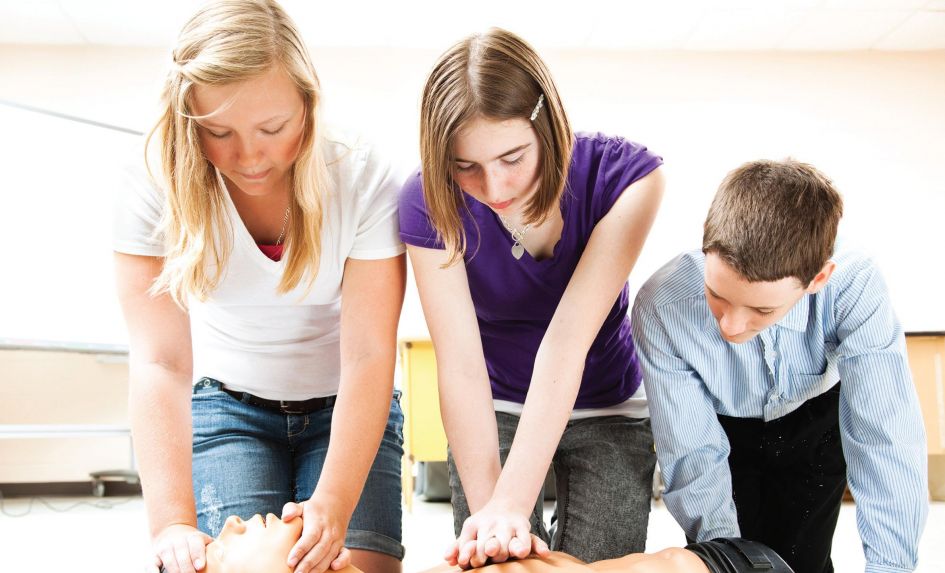In July this year, the government announced plans for basic first aid to be formally taught at both primary and secondary level, as part of its intentions to overhaul the provision of relationships education, SRE and health education in schools.
In the UK, ambulance services attempt to resuscitate approximately 28,000 people each year, of whom only 10% survive. Around 270 children die each year due to a cardiac arrest when at school.
People who have received basic life support training are more likely to recognise the need to quickly commence cardiopulmonary resuscitation (CPR), and will further provide a better quality of treatment prior to the arrival of an ambulance. For every minute that passes without CPR, where an automated external defibrillator is used instead, there will be a 10% reduction in the casualty’s chances of survival.
Denmark added compulsory first aid training for children aged 11 and up to its school programme in 2005. Over the next six years, the country’s provision of bystander CPR doubled and survival rates tripled. From our own personal experience, we’ve previously delivered such training to a number of primary schools and found the response from parents and even very young children to have been extremely positive.
The government is proposing that by the end of primary school, pupils should know how to contact the emergency services and be familiar with the concepts of basic first aid, including how to deal with common head injuries. Children who learn these skills at a young age can be more confident in a real emergency and play a significant role in saving a life.
We saw a vivid example of this in the UK in 2015, when a 3-year-old girl named Emma Bazzard found her pregnant mother collapsed after falling down the stairs. She confidently called 999 and clearly explained the situation to the call handler over the course of an 11-minute conversation. A recording of the call can be heard online, and clearly shows why Emma won a bravery award for her actions.
Primary schools can make a start on developing their provision now by arranging a visit from an external first aid training provider. Our own sessions last 30 to 45 minutes and can be tailored to specific age groups. They are typically held in a school’s main hall or other large space, and involve 20-30 children at a time.
Alternatively, with a number of teachers already possessing first aid knowledge, having previously attended formal first training themselves, certain schools may be able to identify teachers who can devise lesson plans that cover how to act in an emergency, infection control, minor injuries, CPR and the recovery position.
We appreciate that some schools may be concerned at the prospect of having to find additional time for preparing and delivering first aid training in their already busy schedules – but as many schools have already recognised, first aid training is both hugely important and a fantastic life skill for children to learn.
Martyn Blackford is the founder of the first aid training provider Latitude Training; further details concerning the government’s consultation on SRE and health education in schools can be found at here; the consultation runs until 7 November 2018.










